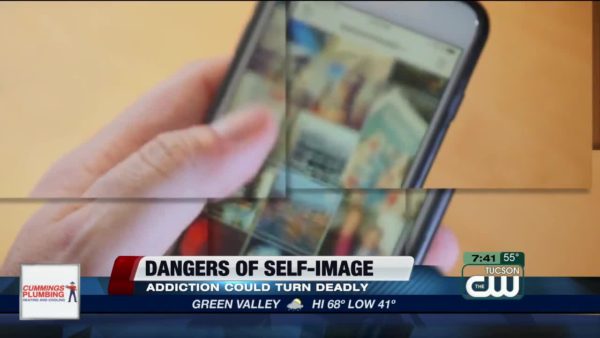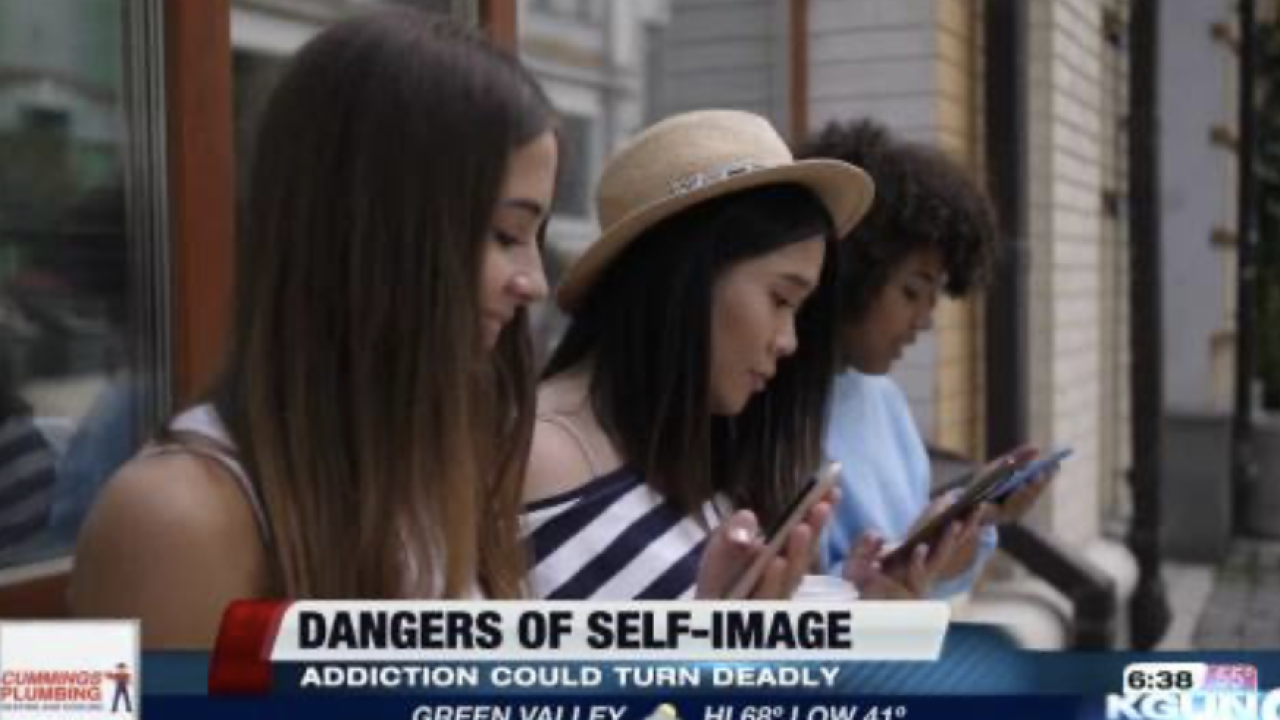
![items.[0].videoTitle](http://www.grandmashealthykidsclub.com/wp-content/uploads/2020/01/local-news-can-a-teens-self-image-addiction-turn-deadly-kgun.jpg)
Taking selfies is something that could be seemingly harmless, until it becomes an addiction. University of Arizona student, Hannah Wilkin says she, didn’t realize she was hooked until it was too late.

TUCSON, Ariz. — Taking selfies is something that could be seemingly harmless, until it becomes an addiction. University of Arizona student, Hannah Wilkin says she, didn’t realize she was hooked until it was too late.
Which then leads to the question, how many selfies do you take to find the perfect one to post? Wilkin says, her 14 year-old self had no limits.
She adds her addiction to self image could have destroyed her.
“You could have bursts of one hundred pictures, in a 2 minute window,” she told KGUN9.
Once she took the photos, the next step was editing the photo or photos she chose to post. This process included app manipulation and editing.
“By the time you are posting, it wasn’t even a real picture anymore and you have completely falsified ever aspect of what you were trying to portray,” Wilikin told KGUN9.
University of Arizona professor Jennifer Stevens Aubrey says, there’s a name for that.
“That’s a variable we call we call self objectification. That’s basically internalizing an outside view of the self. So you’re constantly thinking of how other people see you,” said Stevens Aubrey.
It didn;t take long before Hannah says her obsession with self image started distracting her from school, preventing her from getting a good night’s sleep, and hindering her ability to make meaningful relationships.
“I used to be the kid that slept with their phone underneath my pillow. I left my notification sound on while I slept so I knew when someone messaged me. I had my notifications set so that I could see every comment, every like, everything,” Wilkin said.
I became an obsession Wilkin says she couldn’t turn off.
“I would sit there and refresh refresh refresh, and as soon as it got to 100 likes, I was fine. If I didn’t I would just assume that I wasn’t pretty enough, people just didn’t like me or people just don’t care,” Wilkin told KGUN9.
Professor Stevens Aubrey these behavior patterns can prove to be very negative for the youth.
“So it can be a really destructive and competitive currency, but currency nonetheless that teens can use to evaluate how they are doing in life. Longer term consequences can include depression, sexual dysfunction and eating disorders,” Stevens Aubrey added.
However, Wilkin says she wasn’t concerned about the negative effects this addiction could have. All she was concerned about was creating a profile that looked perfect for her followers.
“It was a self-fulfilling addiction to making myself look and feel a lot happier than I actually looked at the time,” Wilkin said.
Fortunately, at 16 years old, Wilkin realized she was addicted to self image and walked away from social media until she started at the University of Arizona.
“I didn’t want to be the only kid in college without social media. So the addiction…the bloodlines run deep. They still…you still tap into them here and there,” Wilkin told KGUN9.
Now she’s using self image to promote her photography business on Onstagram.
This is a step Professor Stevens Aubrey says is hard to take. She says in order to prevent teens from getting addicted parents also have to do their part.
“If there is an elaborate post production period, where you’re hiring professional photographers, if there is a photo editing software being used and going to or even production period, if their camera roll is filled with picture, if there’s a lot of time choosing the right photo, the right caption…those are the red flags parents should be looking out for,” Wilkin added.
Instagram recently announced it may be removing the ability to like pictures or videos. Which is something Wilkin says could not only save lives, but also encourage teens to be who they are–both on and off social media platforms.
Copyright 2020 Scripps Media, Inc. All rights reserved. This material may not be published, broadcast, rewritten, or redistributed.